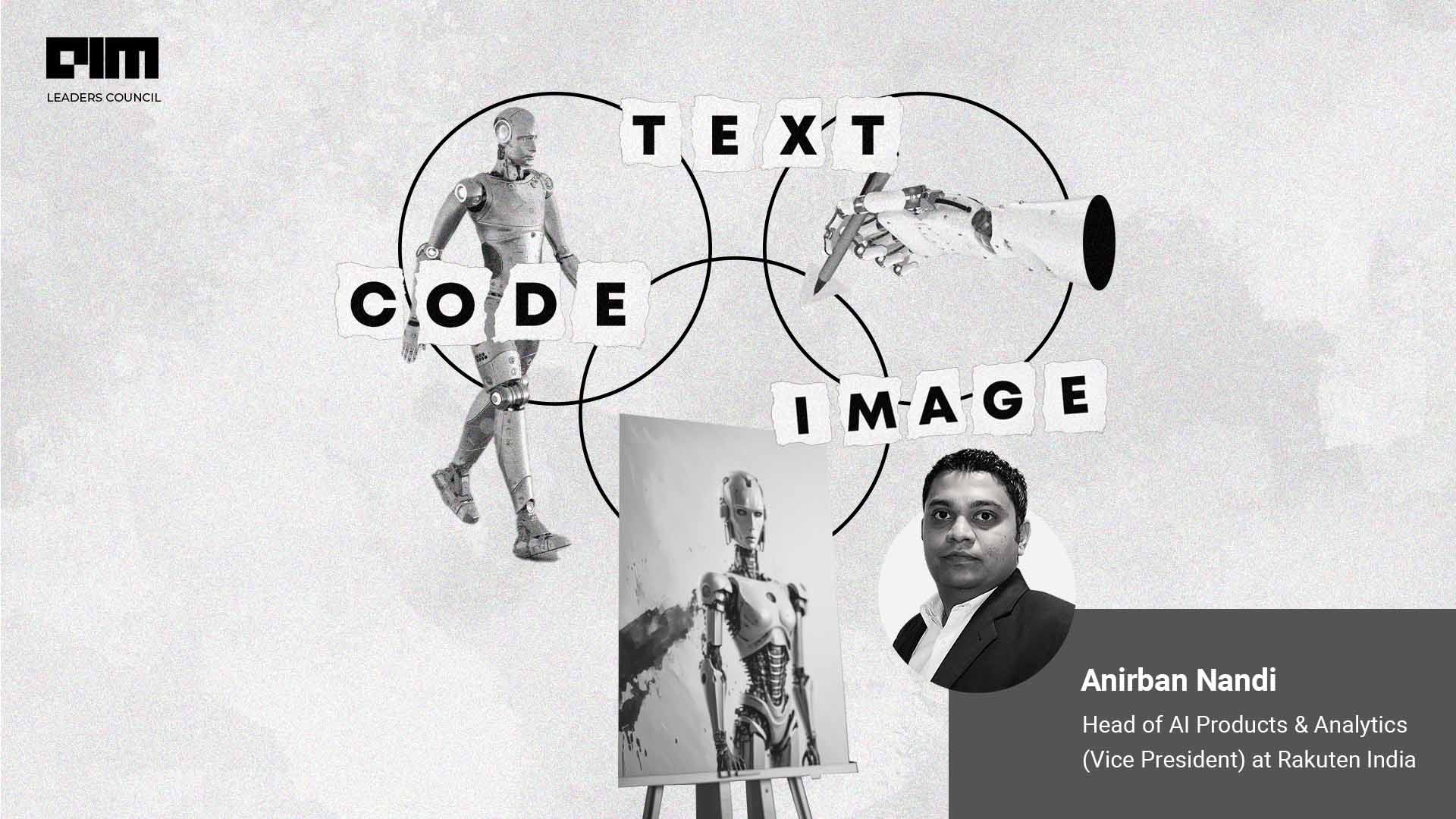|
Listen to this story
|
The potential and hype around artificial intelligence (AI) have become major topics. We can all agree that artificial intelligence (AI) has the potential to significantly improve our lives through tailored treatment, safer transportation, and a host of other applications. ChatGPT, while nifty, is merely the beginning; enterprise possibilities for generative AI are significantly more advanced.
According to McKinsey, generative AI and other foundation models are revolutionising the field of artificial intelligence, advancing assistive technologies, speeding up application development, and enabling advanced functionality for non-technical users. Most people associate ‘Generative AI’ with some type of end-of-the-world scenario. In actuality, generative AI exists to facilitate your work rather than to replace it. Its applications are showing up more frequently in daily life. There is probably a method to incorporate generative AI into your work, regardless of whether you operate as a marketer, programmer, designer, or business owner.
The article will focus on the pros and cons of Generative AI that is being spread across various industries.
Text
One of the most significant impacts of generative AI on the text industry is its ability to automate content creation. With the help of natural language processing (NLP) algorithms and machine learning models, generative AI can create written content that is indistinguishable from content written by humans. This has the potential to reduce the cost and time required for content creation, particularly for businesses that produce a large volume of written content.
Pros:
- Large-scale language and image synthesis for automated content articles, blog posts, and social media postings can all be created automatically using AI models. For organisations and professionals that regularly develop material, this can be a useful time-saving tool.
- Variety of content is increased: Text, photos, and video can all be produced by AI models. Text, graphics, and video are just a few of the content forms that AI models are capable of producing. This can assist companies and professionals in producing more varied and captivating content that appeals to a wider audience.
- Personalised content: AI models can create content that is tailored to the preferences of certain users. This can assist companies and professionals in producing content that their target audience is more likely to find interesting and, as a result, read or share.
Cons:
We already know that these generative AI systems give rise to a number of moral and legal concerns very quickly. ‘Deepfakes’, or visuals produced by AI that appear to be realistic but aren’t, have already appeared in politics, media, and entertainment. A lot of issues over what counts as original and proprietary work are also brought up by generative AI. The makers of these systems contend that the generated text and images belong to their immediate creators because they differ slightly from any earlier content. However, it is obvious that they are derived from the earlier text and pictures that were used to train the models. All of these LLMs struggle with conversational skills. Owing to their exposure to previous human content during training, they have a propensity to repeat any racist, sexist, or otherwise prejudiced remarks.
Code
Pros:
In its most recent ‘Big Ideas 2023’ report, the investment management firm Ark Invest claimed that generative AI may result in a ten-fold boost in coding productivity. Moreover, generative AI can improve code reuse. One of the core principles of software development is to reuse code as much as possible to save unnecessary effort and speed up development. It is not always a simple process to reuse code because it requires locating the right section of code and customising it to the needs of the current application.
Cons:
While generative AI coding can generate code quickly and efficiently, it may lack the creativity and ingenuity of human developers, who can approach problems and solutions in unique and innovative ways. Its coding can produce code with errors and bugs that may be difficult to detect and resolve, requiring significant human intervention and expertise to fix. The coding can amplify and perpetuate existing biases and inequalities in the code it generates, potentially leading to discriminatory or unethical outcomes. It creates vulnerabilities in code that can be exploited by hackers and other malicious actors, creating potential security risks for software applications and systems.
Image
Pros:
The GPT-3 large large language model created by OpenAI, which powers its ChatGPT chatbot and DALL-E picture generation services, along with the BERT large language model utilised by Google are examples of generative AI models. It can aid in data analysis and the comprehension of intricate systems. One of its major applications is the transformation of medical photos into photo realistic visuals and the conversion of satellite images to map views to research new sites. OpenAI’s Dall-E is a free, albeit constrained, service that can produce unique and realistic artwork from text descriptions and natural language.
Cons:
Image generators have been charged for violating privacy rights, copyright, and personal information. The text, image, and music generated by these tools are based on the earlier works of other authors and artists. There are restrictions with free services such as ChatGPT and Dall-E. The latter is likewise cost-free, however each user is only permitted to create up to 50 free photographs in the first month and a further 15 images thereafter. Premium services provide better security and adaptability.
AI models have the potential to change a number of industries with the development of cutting-edge methods like GANs and variational autoencoders. It is crucial to remember that AI-generated content must be handled responsibly and with care for ethical and legal issues. Future generative AI applications are likely to be even more fascinating and creative as the technology develops.
Abraham Lincoln once said, “The best way to predict the future is to create it”. Generative AI has done just that and it’s only the beginning!
Generative AI has much more to offer and explore. In the upcoming articles we will dive deeper into the pros and cons of Generative AI in other industries and explore industry specific use cases.
This article is written by a member of the AIM Leaders Council. AIM Leaders Council is an invitation-only forum of senior executives in the Data Science and Analytics industry. To check if you are eligible for a membership, please fill out the form here.








































